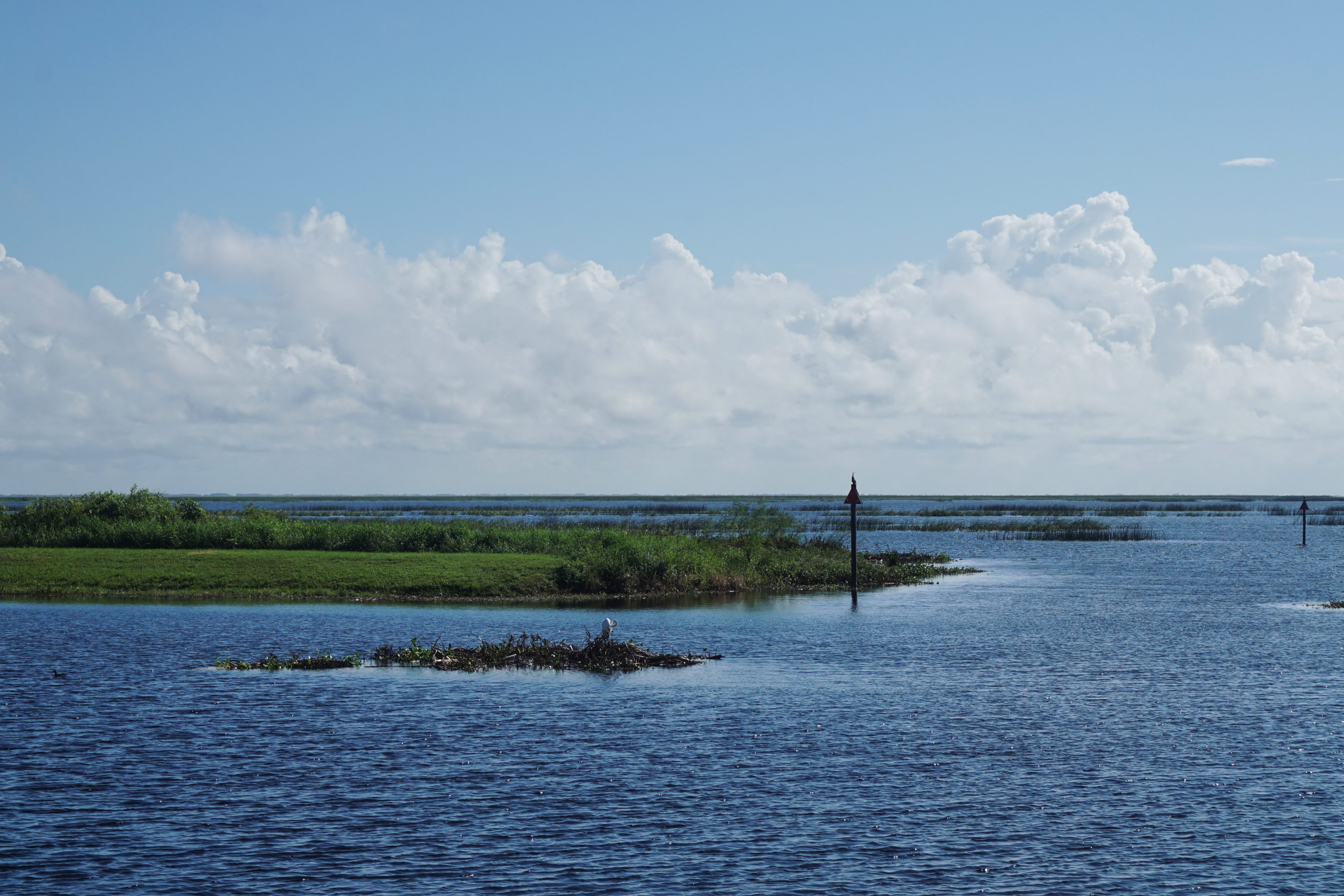
The U.S. Army Corps of Engineers released its optimal model run for the operation of Lake Okeechobee Tuesday as the Corps moves closer to wrapping up a years-long process to develop a new regulation plan.
The Lake Okeechobee System Operating Manual (LOSOM) will replace the previous regulation plan, established in 2008. LOSOM will be a pivotal part in determining where water will flow through the state. It has engendered strong reactions throughout the development process.
Some of the biggest topline changes in the Corps’ new plan include sending more water discharged from Lake O southward to the Everglades. That will lessen the amount sent to the coasts.
That water can contain toxic blue-green algae, which populates Lake O, leading to advocates along the coasts pushing for fewer overall discharges. Lake O would also be kept at a higher overall level under LOSOM. That’s possible because of soon-to-be-completed improvements to the Herbert Hoover Dike.
The optimal model run released Tuesday is not the final portion of the LOSOM development process. The Corps is planning to release more detailed language governing LOSOM in December. But the model does speak to the Corps’ priorities in managing Lake O’s water supply.
“I believe with this model we have found today’s vision of balance for LOSOM that improves conditions for Central and South Florida communities while meeting the Congressionally authorized project purposes of flood control, water supply, navigation, recreation, and preservation of fish and wildlife resources,” Col. James Booth, commander of the U.S. Army Corps of Engineers Jacksonville District, said Tuesday in a statement.
“The model run we announced today will guide us in writing the water control plan and will inform the environmental impact statement we are preparing. We expect to be working on that until April 2022.”
U.S. Rep. Greg Steube, however, was critical of the proposal. Steube has reacted coolly to the LOSOM process in the past, arguing too much water will be flowing into the Caloosahatchee River.
“I understand the Army Corps’ desire to find a compromise with stakeholders, but the selected model still falls short of what is best for lake ecology, the lake communities, and agriculture,” Steube told Florida Politics.
“Discharges from the lake should be spread equitably, and the Corps should not be picking regional winners and losers when determining water flow. We need to find a solution that does not keep the lake level too high for too long, does not have maximum outflows when the lake reaches a certain level and makes sure the water supply is protected when the lake is low.”
U.S. Rep. Brian Mast, who represents the southeast coast of Florida and has been harshly critical over the Corps’ previous discharge schedule, said there was “good and bad news” in Tuesday’s announcement.
“The good news is that under the proposed plan more water can flow south into the Everglades while less water will likely flow east and west during the summer months when the risk of algal blooms is highest. This is an improvement on the very bad status quo,” Mast said in a written statement.
“At the same time, though, this plan falls far short of truly rebalancing the scales of justice when it comes to water management in Florida. Critics will say that that level of progress is impossible until more infrastructure is built, but that’s bulls**t.”
Mast’s statement continued his perpetual war with sugar farmers, arguing too much water is being allocated to those farms. He also blasted President Joe Biden‘s administration’s handling of planned construction projects in the state.
“Fortunately, under Gov. (Ron) DeSantis’ leadership, Florida has accelerated its investment in the Comprehensive Everglades Restoration Plan.”
“Unfortunately, this new lake schedule — along with the Biden Administration’s delay of the EAA Reservoir project and their failure to include direct funding for Everglades restoration in their infrastructure bill — just further emphasizes that the Biden Administration is completely failing to match the State of Florida’s commitment. I will keep fighting to stop the Army Corps’ abuse of our community by all means necessary.”
Everglades Foundation CEO Eric Eikenberg was happier with the Corps’ plan. He argued the model “achieves the balance that both Florida Gov. Ron DeSantis and the South Florida Water Management District sought at the outset of this process.”
Eikenberg added the announcement “is a major improvement from the status quo for the overwhelming majority of Floridians. This plan will significantly reduce harmful discharges to our east and west coasts and increase water flow south to the Everglades and Florida Bay, particularly in the dry season.”
Keith Wedgworth, president of the Western Palm Beach Farm Bureau, offered light praise for the work to improve the model based on feedback from the community. Wedgworth, however, encouraged the Corps to be open to changes ahead of its December update.
“Throughout the LOSOM process, the Corps has heard from thousands of people through testimony, emails and letters stressing the importance of water supply, which includes drinking water for nearly 9 million people, the environment and South Florida businesses,” Wedgworth said.
“The announcement today is an improvement upon previous models, and we encourage the Corps to seek further balance as they refine their operating process. Lake Okeechobee’s operations are critical to so many people and so many important places in South Florida, so it is important the Corps continues to make the necessary changes to get it right.”

One comment
James
November 22, 2021 at 5:31 am
So the water goes west. It can’t go south , it can only be easy or west and it’s going to go west because they rather save the east coast by destroying the wests fishery etc. it can’t be this hard to fix the problem. Do the right thing, not who’s paying you more should win
Comments are closed.